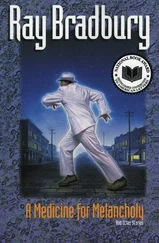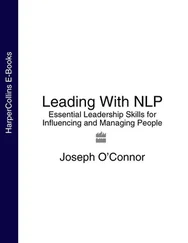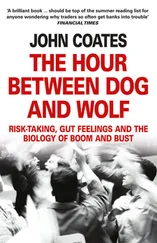Cyclotrons are circular devices ( Figure 3.5) in which charged particles such as protons and alpha particles are accelerated in a spiral path within a vacuum. The power supply provides a rapidly alternating voltage across the dees(the two halves of the circle). This produces a rapidly alternating electric field between the dees that accelerates the particles, which quickly acquire high kinetic energies. They spiral outward under the influence of the magnetic field until they have sufficient velocity and are deflected into a target.

Figure 3.2 Transient equilibrium.

Figure 3.3 Transient equilibrium in a 99Mo– 99mTc generator.
A deflector is used to direct the particles out through a window of the cyclotron into a target. Some of the particles and kinetic energy from these particles are incorporated into the nuclei of the atoms of the target. These energized (excited) nuclei are unstable.
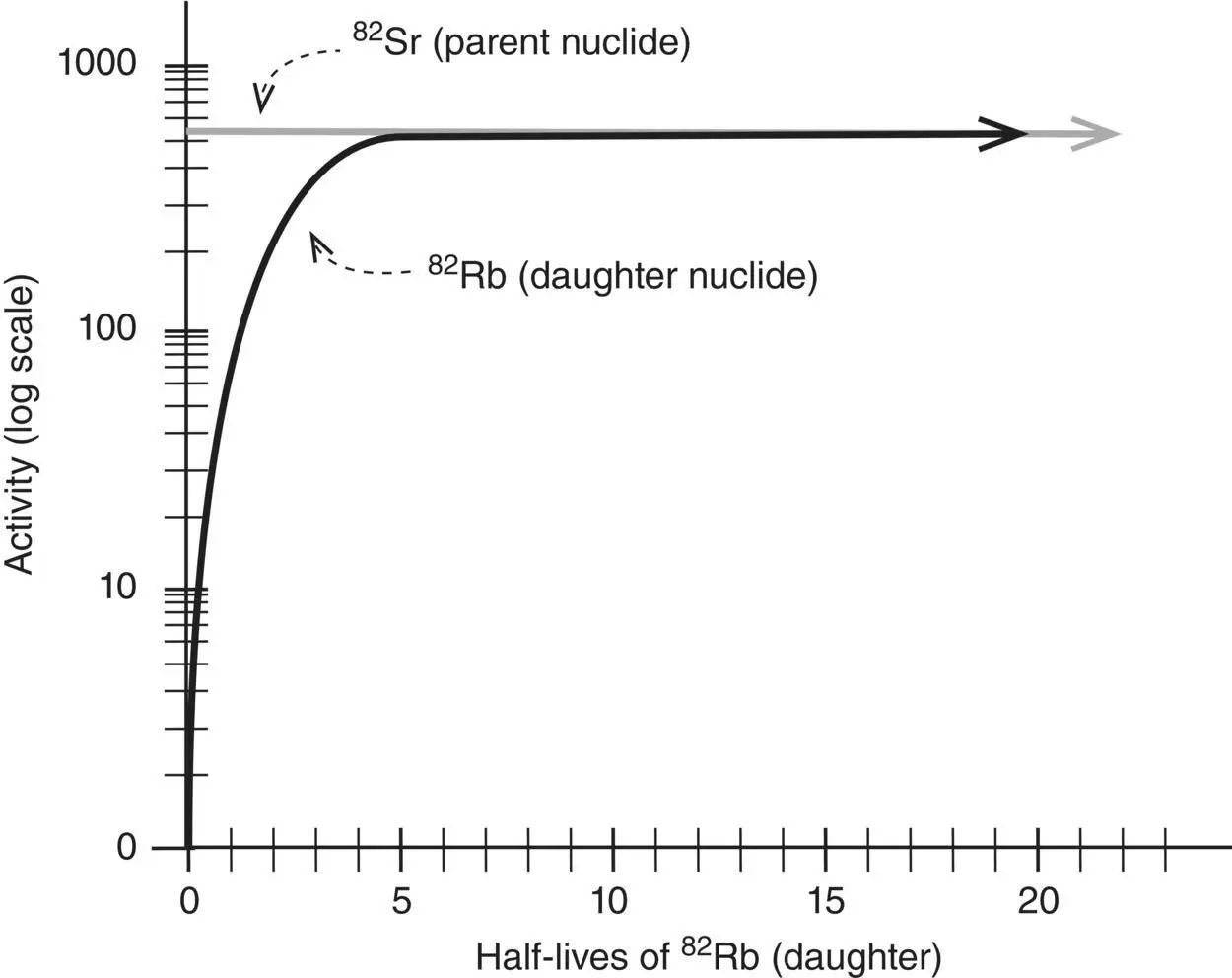
Figure 3.4 Secular equilibrium.
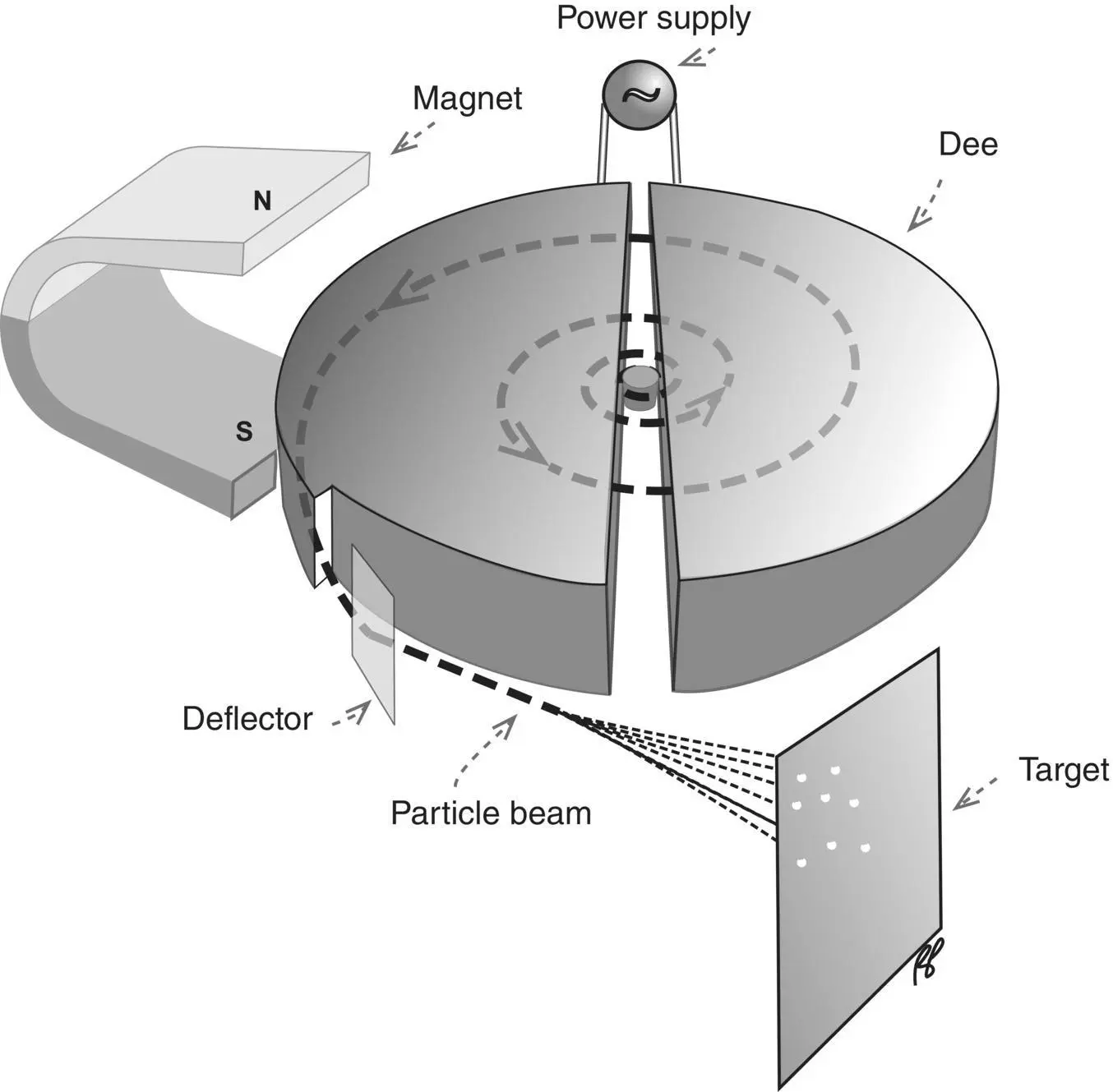
Figure 3.5 Cyclotron.
Indium‐111 ( 111In) is produced in a cyclotron. The accelerated (bombarding) particles are protons. The target atoms are cadmium‐112 ( 112Cd). When a proton enters the nucleus of a 112Cd atom, the 112Cd is transformed into 111In by discharging two neutrons. This reaction can be written as:

or

Other examples of cyclotron reactions include 121Sb(α,2n) 123I, 68Zn(d,n) 67Ga, and 10B(d,n) 11C, where the symbols α and d denote alpha particles and deuterons (proton plus neutron) respectively.
Radionuclides for nuclear medicine are also produced in nuclear reactors. Some examples include 131I, 133Xe, and 99Mo.
A general schematic of a reactor is seen in Figure 3.6. A reactor is composed of fuel rodsthat contain large atoms (typically Uranium‐235, Uranium‐238, or Plutonium‐239) that are inherently unstable. These atoms undergo fission, (see Figure 1.14). Two or three neutrons and approximately 200 MeV of heat energy are emitted during this process. These neutrons leave the nucleus with moderately high kineticenergy and are referred to as fast neutrons. The neutrons are slowed with a moderatorsuch as graphite, water, or heavy water. These “very slow” or thermal neutrons, and to a lesser extent the fast neutrons, in turn impact other fissionable atoms causing their fission, and so forth ( Figure 3.7). If this chain reactionwere to grow unchecked, the mass would explode. To maintain control, cadmium control rodsare inserted to absorb the neutrons in the reactor. They can be further inserted or withdrawn to control the speed of the reaction. Medical nuclides are made in reactors by the processes of fission or neutron capture.
Kinetic means “motion.” The form of energy attributable to the motion of an object is its kinetic energy. Kinetic energy is related to both the mass ( m ) and velocity ( v ) of the object, specifically ½ mv 2. A moving car has kinetic energy, a parked car does not. A speeding car contains a great deal of kinetic energy that can be dissipated rapidly as heat, noise, and the destruction of metal in a collision.

Figure 3.6 Schematic of a nuclear reactor.
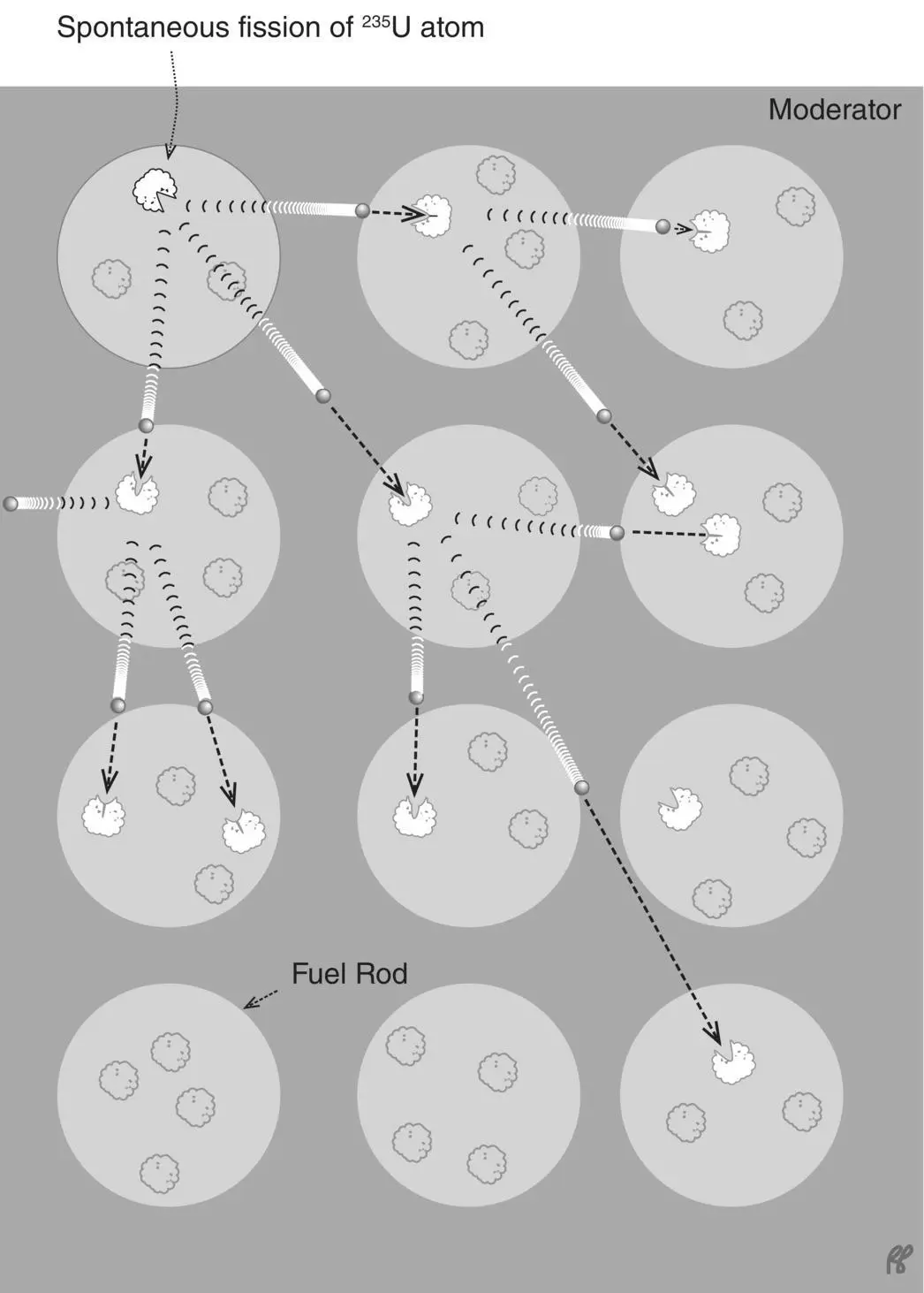
Figure 3.7 Chain reaction involving 235U and slow neutrons.
In this process, the desired radionuclide is one of the fission fragmentsof a heavy element ( Z > 92), either the fuel atom itself or the atoms of a targetplaced inside the reactor. The by‐productis chemically separated from the other fission fragments. The fission reaction is denoted as

For example, the formation of iodine‐131 and molybdenum‐99 are written as

In neutron capture the target atom captures a neutron. The new atom is radioactive and emits gamma photons or charged particles to produce the daughter nuclide ( Figure 3.8). A gamma photon is emitted following capture of a thermal (slow) neutron. This reaction is written as

For example:

When the target atom captures a fast neutron a proton can be emitted. This capture reaction is sometimes referred to as transmutationand is symbolized as

For example:

A list of common medical nuclides and their methods of production, modes of decay, and decay products is provided in Appendix A.
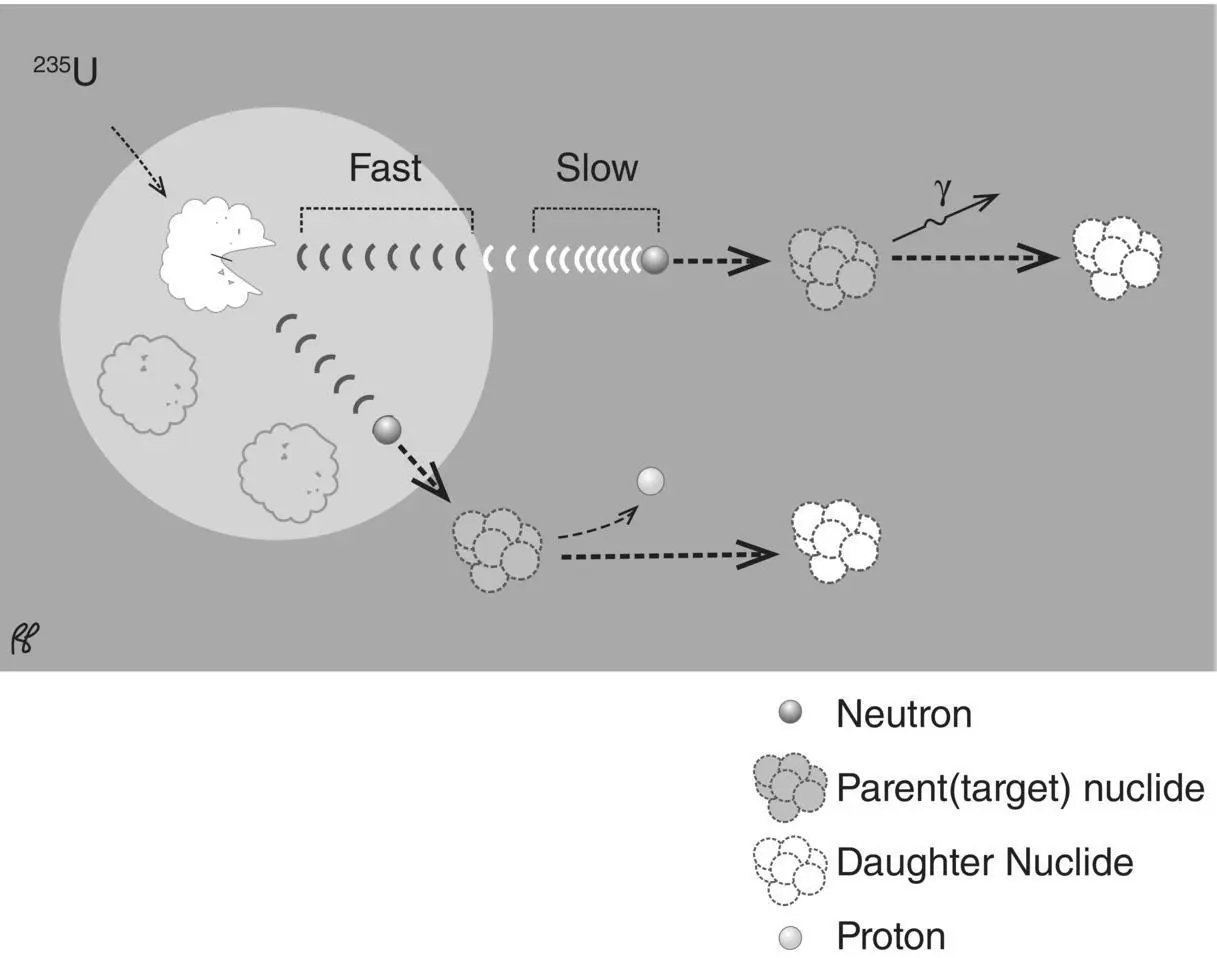
Figure 3.8 Neutron capture by target nuclide placed in a reactor. Thermal (slow) neutron capture causes gamma emission (top), fast neutron capture results in proton emission (bottom).
Читать дальше
















